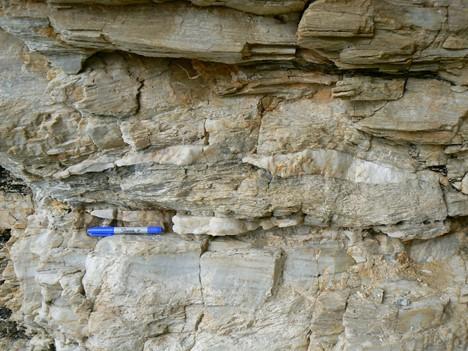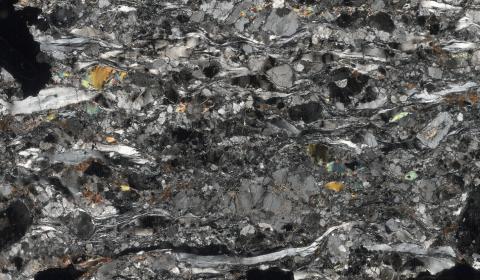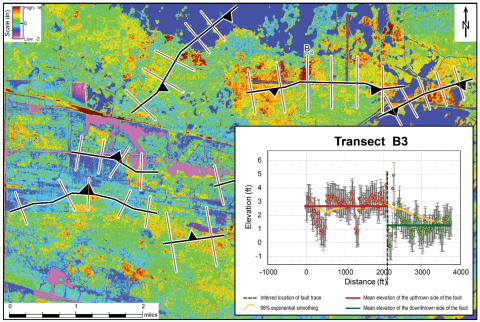Structural Geology & Tectonics
Seismic deformation
Seismic deformation takes place within seconds to minutes and produces distinct microstructures, which can be replicated in the laboratory and in turn provide useful information on strain rates and slip conditions
Fluid-rock interaction in detachment shear zones

Fluids are commonly invoked as a primary cause for weakening of the rheology of detachment shear zones. Field, structural, and microstructural investigation of deformed rocks provides critical information to understand fluid-related mechanisms such as pressure-solution, reaction enhanced ductility, reaction softening, development of fabric, and the precipitation of phyllosilicates. (Dr. Gottardi)
Rheological studies of shear zones

The combination of field work, structural, and microstructural analyses, geothermochronology, and geochemistry provides constrain on the timing, strain, strain rate, stress, vorticity, and kinematics of during the evolution of detachment shear zones, and mid- to lower-crustal processes. (Dr. Gottardi)
Relationship between faulting and subsidence in coastal Louisiana

Southern Louisiana is experiencing rapid subsidence and land loss, and a multitude of environmental problems. Subsidence is controlled by tectonics (fault processes and halokinesis), Holocene sediment compaction, sediment loading, glacial isostatic adjustment, fluid withdrawal, and surface water drainage and management. Studying subsidence remains complex because these processes are not independent of each other, and often exert feedback mechanisms. The role of shallow faulting is particularly complex because it is difficult to identify. Industry 3D seismic survey, well and well log data, LIDAR data, and historical aerial imagery can be used to identify shallow fault, and investigate their role on coastal subsidence and land loss. (Dr. Gottardi)
